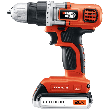Installing sheet vinyl can be one of the easiest possible methods for installing new floors in your home. The reason for this is actually pretty simple. Most manufacturers make their sheet vinyl in widths of 6 and 12 feet, which you can then simply lay down, and attach to the floor. To make sure that you do the job right though, you should follow these simple steps.
Before you begin, a word of caution. Some types of vinyl sheeting will require a different method for installation than is described here. Be sure that you are familiar with the instructions from your manufacturer before you begin. If there is any difference between the two methods of installation, follow the instructions of your manufacturer instead of those listed here.
Materials:
- Adhesive
- Primer
- 6d ringshank nails
- Hammer
- Ready-mix underlayment
- Pry bar
- Butcher paper
- Safety goggles
- Utility knife
- Flooring knife
- Hand roller
- Compass
- Tape measure
- Handsaw
- Trowel
Procedure:
- Remove some baseboard and molding. Place a scrap piece of flooring, or even a small piece of cardboard against the molding of your doors, and against he molding of your walls. Use a small hacksaw or handsaw, and trim the molding where the flooring or cardboard rests against it. This will allow you to insert the vinyl sheeting underneath the molding with no problem.
- Make sure that the floor is level. Look over your subfloor, and make sure that it is level, and that there are no dips, depressions, gaps, or knotholes. If you find any, patch and fill those problem areas using wood filler, or concrete, or other material as the manufacturer suggests. Make sure that the floor is as smooth as possible before you go on to the next step.
- Create a pattern to follow. Begin laying down butcher paper across your subfloor. This butcher paper will act as a template for your vinyl. Cut out the paper so that it will fit appropriately around any corners, cabinets, pipes, or other items that you may need to work around. Tape each section of the paper together so that you have one continuous and piece of paper. Once you have finished making the template, begin rolling it up.
- Cut the vinyl according to the pattern. Unroll the vinyl, and then lay out the template you created on top of it. Begin cutting the vinyl according to the template. Be careful as you do this so that you do not make any mistakes. If necessary, use small sections of the template at a time, and cut each piece of vinyl so that it will match appropriately. This may mean that you have more seams, but it will make the vinyl a little wieldier. Once you have finished cutting the vinyl, either roll them up, or stack the pieces so that you know which section will go where.
- Lay the vinyl. If you are using one large piece of vinyl, begin laying it all out. Unroll everything, and make any minute adjustments that you may need to. For those small pieces of vinyl, then begin laying everything out in the appropriate location.
- Apply the adhesive. For a single large piece of vinyl, roll up half of the vinyl. Use a trowel to apply the adhesive onto the subfloor, and then unroll the vinyl. Repeat the process with the other side of the room. If you are using small pieces of vinyl, then simply lift up a piece and apply the adhesive. Replace the vinyl, and then repeat the process with each of the other pieces of vinyl.
- Smooth out the air bubbles. Once you have applied the adhesive, use a hand roller to begin smoothing out any air bubbles, and ensuring that you have a tight seal. Start in the middle of your floor, and work your way out towards the edges.
- Clean up. Clean up any dirt and debris from the installation.
Author Bio
Lee Wyatt
Contributor of numerous Tips.Net articles, Lee Wyatt is quickly becoming a regular "Jack of all trades." He is currently an independent contractor specializing in writing and editing. Contact him today for all of your writing and editing needs! Click here to contact. Learn more about Lee...
Coffee Machines
Anyone that drinks coffee will attest to just how important and vital the coffee machine can be. Coffee machines are ...
Discover More
Hanging Pictures with Style
Everyone can hang pictures on their wall, but not everyone can do it with style. Surprisingly hanging pictures with style ...
Discover More
Understanding Veteran's Benefits
Understanding the benefits that a veteran receives can be a tad difficult. In fact, there are whole branches of the ...
Discover More
More Home Improvement Tips
Removing Grout
When using power tools to remove grout, make sure that your bit is the appropriate size for the space between the tiles. ...
Discover More
Preventing Moth Infestations
Moths can be a tricky critter to deal with. After all, often you don't know that they are present until after the damage ...
Discover More
Repairing Laminate Flooring
Laminate floors are a great way to provide the look and feel of natural wood floors, without the expense or difficulties ...
Discover More

Comments